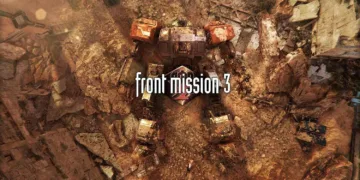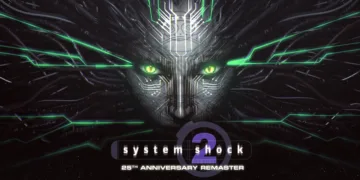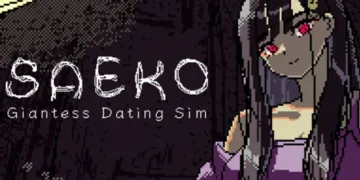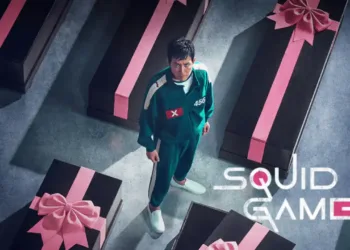Without a Dawn is a solo-developed indie title by Jesse Makkonen, arriving on PC via Steam on May 19, 2025, and launching with a 15 percent discount. It presents itself not as a conventional gameplay experience but as a concise visual horror novel—an atmospheric exploration of psychological fragility rather than traditional mechanics. Players assume the role of a woman who retreats to a remote cabin, aiming to recover from unseen traumas.
Instead of battling monsters or leveling up, the player navigates a series of choices and dialogue prompts that blur reality with feverish hallucinations. Strikingly minimalistic, the art leans on pseudo-ASCII imagery and pared-down UI framing; each frame and tinted filter cultivates a sense of isolation.
The sparse interactivity—dialogue wheels and occasional branch points—serves to intensify the mood rather than drive complex systems. On a first run, expect roughly forty-five minutes of story, with minor branching that rewards a second playthrough by revealing hidden lines of dialogue and subtle visual cues.
Trigger warnings apply: themes include anxiety, depression, self-harm, and psychosis. Those sensitive to intense portrayals of mental illness should approach with caution, ideally using headphones at night to fully experience its haunting sound design.
Narrative & Thematic Depth
Without a Dawn employs a linear narrative progression: the protagonist arrives at her isolated cabin at dusk, already haunted by inner turmoil. Early scenes focus on mundane tasks—trying to sleep, flicking a switch, peering out the window—only to escalate when soft creaks morph into fever dreams.
Dialogue choices appear intermittently, but most options funnel back to the same plot beat; a few well-timed selections reward extra lines that hint at deeper meaning. This design reflects the tension between agency and inevitability—mirroring how mental illness can feel inescapable.
The narrative frames anxiety and depression as relentless internal voices. Moments such as insisting there’s something behind the blinds—even when it’s only a swaying branch—capture how fear can override rational thought. Comparisons to Makkonen’s earlier work like Distraint highlight his skill at making ordinary spaces feel menacing. Here, minimal location design emphasizes the protagonist’s isolation; as she navigates creaking floorboards, muted ambient audio draws focus to whispered self-doubt.
Visual cues—shifting ASCII patterns, flickering gas-mask apparitions—signal transitions into dream sequences. The recurring gas-mask figure delivers cryptic messages, layering paranoia on top of existing dread. These motifs recall narrative-heavy indie titles like Slay the Princess, where symbolic imagery deepens thematic resonance.
In Without a Dawn, each motif invites interpretation: is the gas mask a manifestation of societal pressure or a symbol of personal guilt? Only by slowly inspecting on a second playthrough can one notice how minute changes—slightly altered text coloration or an added static crackle—foreshadow narrative shifts.
The cabin itself represents an attempt at sanctuary that becomes a prison of the mind. Darkness encroaches not only physically but psychologically, as corridors of text distort to unreadable gibberish. This technique parallels what games like Return of the Obra Dinn do with visual distortion to convey disorientation. Here, visual distortions underscore the protagonist’s unraveling sanity. Players who pause on each text screen and adjust custom filters might catch hidden figures in the background—nuances that reward patient observation.
At first, the protagonist holds onto hope—seeking peace by stepping away from daily life. Yet as hallucinations intensify, hope collides with despair. The writing voice alternates between soothing and accusatory, akin to an inner monologue that comforts one moment and gaslights the next.
This mirrors real mental-health dynamics: depression lies low before striking with crushing certainty, while anxiety whispers false alarms. By mapping this arc, Without a Dawn asks players to feel the protagonist’s shifting emotions: fleeting solace when the dawn appears, then crushing hopelessness as the cabin’s shadows lengthen.
Visual & Audio Presentation
Without a Dawn’s world is constructed from pseudo-ASCII characters, forming silhouettes, trees, and the protagonist’s portrait out of numbers and symbols. This minimalism nods to classics like Dwarf Fortress’s ASCII mode but is repurposed here to invoke unease.
Walls appear as shifting grids of characters, and a simple change in filter—from default monochrome to a greenish glow—can transform an otherwise familiar scene into something sinister. In settings, players can toggle frames (e.g., wireframe borders or grainy overlays) and alter textures to a “cracked film” effect. These options allow each viewer to tailor the visual mood: a colder palette makes every shadow more forbidding, while warmer tones lend an oddly comforting nostalgia.
The absence of a sweeping musical score compels the game to rely on spatial audio. Layers of ambient wind through trees, distant creaking floorboards, and intermittent static punctuate the silence. Clicking a dialogue choice often triggers a muted “thump,” amplifying every decision.
These subtle auditory cues recall what Amnesia: The Dark Descent achieves in its moments of silence—tension builds until a single noise becomes unbearable. Without a Dawn heightens immersion by recommending headphones: only then do faint breaths and indistinct whispers from unseen corners register, coaxing the player to wonder if the next sound is real or imagined.
Unlike many indie horror titles, Without a Dawn encourages modding: fans may upload custom voice tracks, layering human warmth—and dissonance—over stark visuals. Similar to how Undertale’s fan translations deepen emotional connection, custom voiceovers can lend new shades to the protagonist’s anxieties.
The option to import translated dialogue invites a broader audience, enabling non-English speakers to experience the narrative without losing nuance. These features boost replay value: toggling between the developer’s sparse narration and community recordings reshapes the game’s emotional pulse.
Combined, the stripped-down visuals and meticulous audio crafting build an oppressive, paranoid environment. Imagine playing P.T. in a text-based realm: every flicker of ASCII noise and every sudden hiss of wind feels like a threat. Momentary lull—when only the hum of a faulty light fills the ear—can be more unsettling than overt horror.
The game’s insistence on minimalism forces players to project their fears onto blank spaces. In a headset, footsteps echo behind you with no visible source; on speakers, that same echo might seem distant, but lose some intimacy. High-quality headphones make all the difference: whispers seem to crawl around your head, and every ambient effect slices deeper into the psyche.
Interactivity, Replayability & Value
Without a Dawn does not map to typical combat, exploration, or character-leveling systems. Instead, interactivity consists of selecting dialogue or simple actions—peeking outside, inspecting objects, or pressing forward in conversation. Most choices loop back to the primary story beat; only a handful branch briefly to unlock small snippets of optional dialogue.
This design is reminiscent of visual novels like OneShot or To the Moon, where narrative dictates player movement more than gameplay systems. As a result, pacing alternates between passive reading and fleeting decision points; these moments serve less to shape an outcome and more to deepen immersion.
A second run unearths context: slightly different text filters reveal hidden symbols in the background, while branching lines of dialogue reveal fresh psychological insights. Discovering that a single choice—opting to comfort oneself versus succumbing to fear—yields a short extra line can reshuffle one’s interpretation of the protagonist’s mental landscape.
Custom filters and fan-made voiceovers further diversify each playthrough: for instance, applying a “vaporwave” color palette can make scenes feel surreal, while a “sepia” filter lends melancholic warmth. Small details—like an extra static crackle when reading late at night—become rewards for those who revisit.
Clocking in at about forty-five minutes per playthrough, Without a Dawn asks players to weigh its brevity against its craftsmanship. Priced at $7.99 (with 15 percent off at launch), it sits alongside similarly short narrative experiences like Slender: The Arrival or Thirty Flights of Loving. For players who value tight, introspective horror, the handcrafted atmosphere justifies the cost; others seeking deeper gameplay or multiple endings may balk. Yet the emotional aftertaste—wondering if one’s choices were gentle or harsh—lingers, giving this short experience a resonance that extends beyond its runtime.
Without a Dawn caters to fans of psychological horror and experimental visual novels who appreciate thematic depth over mechanical complexity. Those accustomed to RPGs with branching skill trees or open-world exploration may find its limited interactivity unconventional.
However, anyone drawn to introspective narratives—where choice serves to mirror the fragility of the human mind—will recognize its value. Trigger warnings apply: intense depictions of mental illness and self-harm may distress some players. For maximum impact, hear every whisper and rustle by playing at night with headphones. In that setting, Without a Dawn becomes less a game and more a short, haunting journey through darkness, offering a glimpse into what it means to confront one’s own mind when the lights go out.
The Review
Without a Dawn
Without a Dawn offers a haunting, concise exploration of psychological horror, blending minimal interactivity with evocative ASCII visuals and meticulous sound design. Its sparse choices and one-hour runtime limit traditional gameplay depth, but its unsettling atmosphere and emotional resonance linger. For players seeking an introspective, art-driven experience, it delivers a memorable journey, though those expecting robust mechanics may feel constrained.
PROS
- Immersive ASCII-inspired art style that heightens unease
- Exceptional spatial audio design for tension-building
- Compact runtime encouraging multiple, detail-focused playthroughs
- Meaningful symbolism and psychological depth that rewards reflection
CONS
- Limited player agency with mostly linear progression
- Short length may feel insufficient for those wanting extended gameplay
- Sparse mechanics may disappoint players seeking traditional systems
- Heavy themes and triggers could be distressing for some


















































